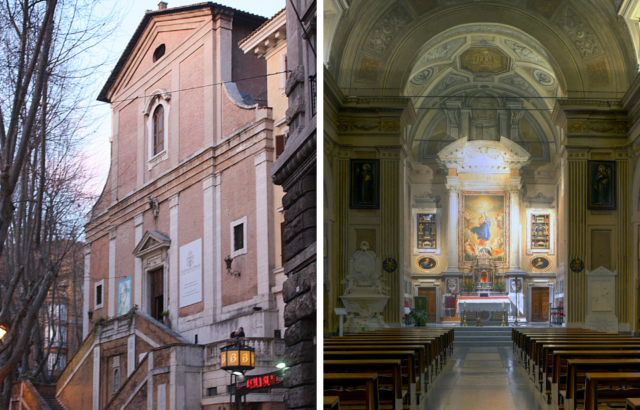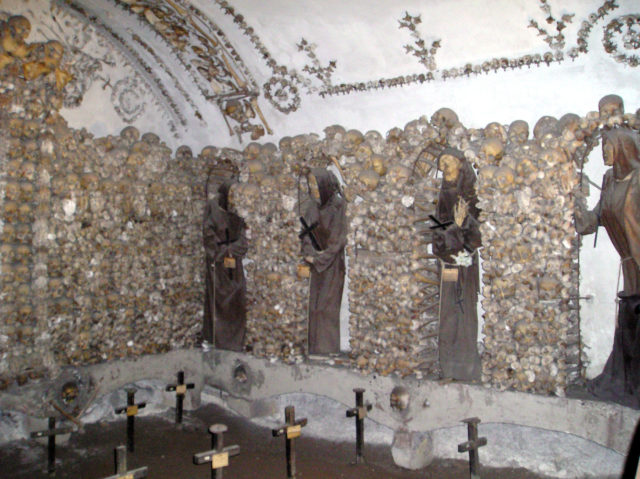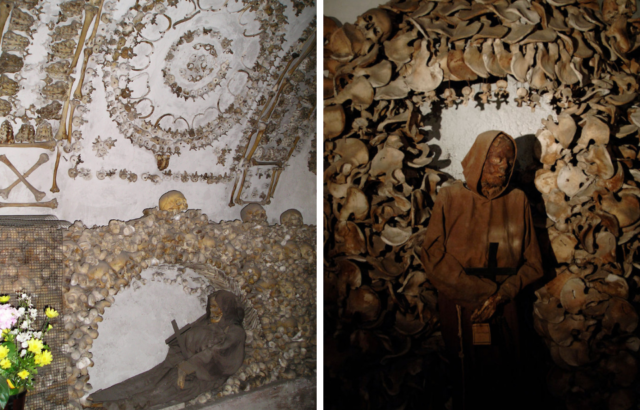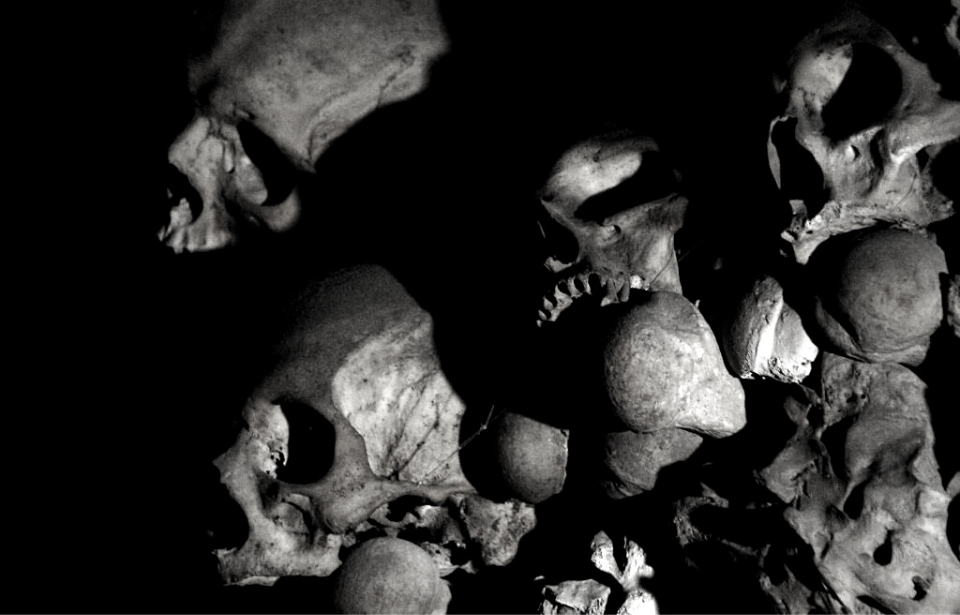Decorated with the bones of 4,000 skeletons, the crypt of Our Lady of the Conception of the Capuchins or Chiesa di Santa Maria Immacolata is unlike any burial place you will ever see.
Located at 27 Via Veneto in Rome, the relatively plain exterior of the Church of Our Lady of the Immaculate Conception paints a misleading picture. Beyond the seemingly normal facade, the historic church hides an eerie secret in the depths below the altar.
The church built out of bones
The church was built with the help of Pope Urban VIII in the 1620s under the supervision of his brother Antonio Barberini, a Capuchin monk, and was designed by papal architect Michele da Bergamo. The church was a much-needed expansion for the Capuchin order which had grown drastically over the early 17th century. Since they had outgrown the original friary, the Order of Friars Minor Capuchin – a religious order of Franciscan friars that is part of the Catholic Church – was given a plot of land to construct a new church and monastery.

Once the church was completed in 1631, there was the question of the bones left buried at the old friary location. The remains of thousands of deceased monks were exhumed from the former friary and transferred to the crypt. For the next century, Capuchin monks from around the world would be buried in the “Cripta Cappuccini.”
It wasn’t until the 18th century that the piles of bones were turned into the creative designs there today. The jury is still out over who was the mastermind behind the ossuary, though some believe a Capuchin artist was responsible.
The crypt that celebrates death
The crypt is an ossuary consisting of small chapels, with each chapel containing different types of bones from the deceased monks. They include the Crypt of the Three Skeletons, the Crypt of Tibias and Femurs, the Crypt of the Basins, the Crypy of Skulls, and the Crypt of Ressurection. Mummified friars still wearing their monks’ robes line the walls of the crypt. The skeleton of a child can be seen on the ceiling holding a scale and a scythe, a reference to death.

Everything from the trim to the fresco-like designs on the ceiling to the chandeliers is made out of bones, some of which date back as early as the 1520s. The bones are often arranged to make symbols related to death like hourglasses, clocks, and butterflies.
Roughly 200,000 visitors walk through the doors of Santa Maria Immacolata each year hoping to glimpse the macabre displays for themselves. The Marquis de Sade visited in 1775 and found his affinity for violence stroked by the surreal sight, saying “I have never seen anything so striking.”
Author Mark Twain also visited the crypt in 1867, exclaiming that the “picturesque horrors” of the ossuary “was a spectacle for sensitive nerves!” The ghostly skeletons who seem to stand guard over the crypt greet visitors as they enter with an eerie message engraved on a plaque: “What you are we were; what we are you will be.”

Though the crypt is dark and morbid, the meaning behind the elaborate bone decorations is surprisingly positive. The stacks of skulls and ornate details made from vertebrae that surround the cloaked skeletons holding crosses are meant to emphasize that our body is nothing but a temporary vessel for the soul. By abandoning the vessel, it can “be reused in another way” just as the bodies of the Capuchin monks have been reused in the ossuary.
More from us: The Decrepit Remains of Benito Mussolini’s Retirement Home in Greece
As a memento mori, Latin for “remember you will die,” the crypt is meant to be a direct confrontation with your own mortality. The final chapel in the crypt represents the final process of death: resurrection. A painting hangs on the wall depicting Jesus raising Lazarus from the dead. This is a powerful symbol of the Capuchin monk’s greatest belief – that death is not an ending but the beginning of a new journey.
